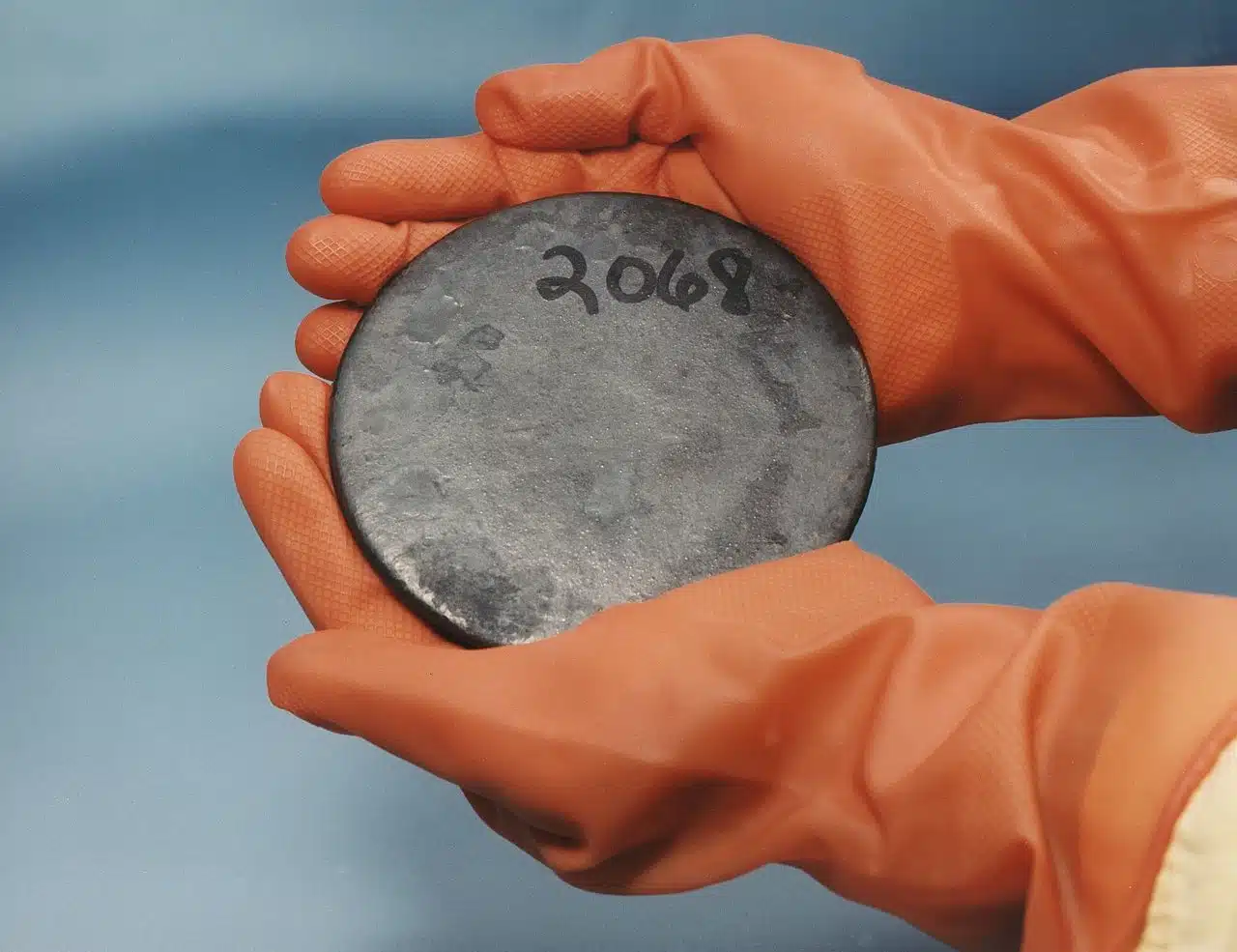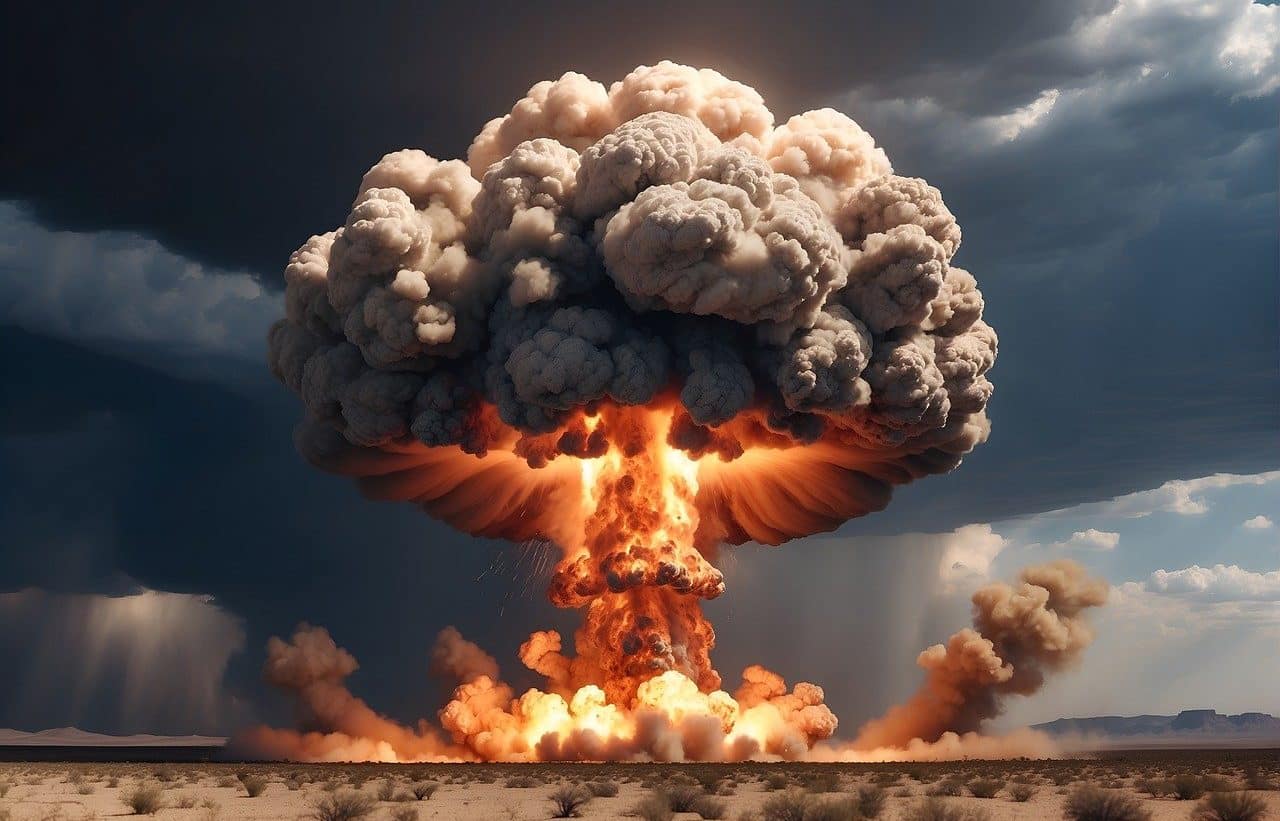
In nature there is only one fissile isotope capable of triggering a chain of nuclear fission reactions: uranium-235. In a nuclear reactor , the addition of control rods slows down the reaction, while in an atomic bomb the reaction is not under control, which is why a nuclear explosion occurs.
Nuclear fission is the name given to a reaction that occurs when the nucleus of an atom ends up segmenting into at least a pair of lighter nuclei (which are considered fission products and are usually very radioactive). In this framework, a series of byproducts even arise (such as photons, alpha and beta particles, and free neutrons).
It is an exothermic phenomenon in which a considerable amount of energy is released. When each released neutron hits other nuclei and then the fissions multiply, it is usually said that a chain of reactions occurs.
It is interesting to know that, although there are cases of spontaneously triggered nuclear fissions , this process can be induced by multiple methods. And it should not be overlooked that having discovered the nuclear fission of thorium and uranium earned the German chemist Otto Hahn the Nobel Prize in Chemistry in 1944 . Key to this expert's findings was the work of Lise Meitner , an Austrian scientist who, like Otto Robert Frisch , her nephew, formed the team that carried out experiments to gather evidence of the nuclear fission procedure.
Types of nuclear fission
When searching for references that allow us to understand nuclear fission in more depth, two large groups come to light that provide constructive data in this regard: that of spontaneous fission and that of induced fission .
According to specialists on this topic, the most massive of the actinide elements are more susceptible to experiencing spontaneous fission , a radioactive decay process typical of heavy isotopes that is triggered without any particle colliding with the atomic nucleus .
In contrast, it can be said that there is forced root disintegration in the case of induced fission .
There is also a variety of hybrid fusion-fission reactors that can generate nuclear energy on a large scale without emitting gases linked to the greenhouse effect in the process.

Radioactive contamination can arise when manufacturing, testing or researching an atomic bomb; as a consequence of a nuclear accident (such as Fukushima or Chernobyl), etc.
Applications
Nuclear fission is used in practice for very different purposes.
It produces electricity in nuclear power plants and can power the explosion of a nuclear weapon .
Using it in a controlled manner, in addition, a type of technology known as nuclear energy is achieved, which, as a by-product, generates heat, very useful for the propulsion of a steam turbine, for example. Nuclear technology , for its part, has important applications in medicine , both in the diagnosis stage and in the phase of providing treatments.

Among the variety of nuclear reactors are the pressurized water reactor (PWR), where heavy water is used at high pressure for cooling and as a neutron moderator, and the boiling water reactor (BWR).
Past, present and future of nuclear fission
It is extremely attractive to focus attention on the history and scope of nuclear fission to learn about its past , be aware of the present and try to envision how this process will be used or applied in the not-so-distant future.
In times of World War II , for example, the so-called Manhattan Project was conceived and promoted. This plan, oriented towards research tasks and the manufacture of nuclear weapons , had uranium as the main working element, using it for example as fuel for nuclear reactors and in the constitution of the atomic bomb . Among those who participated in this great bet was Robert Oppenheimer , an American specialized in theoretical physics and university professor of physics who was appointed as scientific director of said project and, in that context, he promoted a reorganization at the Los Alamos National Laboratory . At that institution, a few seasons ago, a collaborative study was carried out that seems to have detected nuclear fission phenomena in the cosmos. This research required the careful observation of more than forty stars and the analysis of elements heavier than those present in the periodic table . In order to predict and guide discoveries, models of nuclear fission were developed.
In the historical review, the figure of the physicist Enrico Fermi also appears as relevant, who investigated and dealt with induced radioactivity by exploring neutron-based irradiation (for which he obtained the Nobel Prize in Physics in 1938 ). Furthermore, assisted by several collaborators, he obtained dozens of isotopes by bombarding various elements with neutrons . He even participated in the creation of the atomic bombs that, as he ended up learning in the technical sector of the aforementioned Los Alamos Laboratory , were dropped on the Japanese cities of Nagasaki and Hiroshima .
To detail another ambitious and revolutionary initiative of the modern era: NASA has been working for some time to guarantee the production of nuclear energy on the moon. Within the framework of a project focused on fission energy on the surface and with a view to future demonstrations and uses both on the lunar territory and on Mars , as it turned out, conceptual designs have been developed for the creation of a small nuclear reactor. capable of generating electricity and operating for ten years without the need for intervention by human beings.
